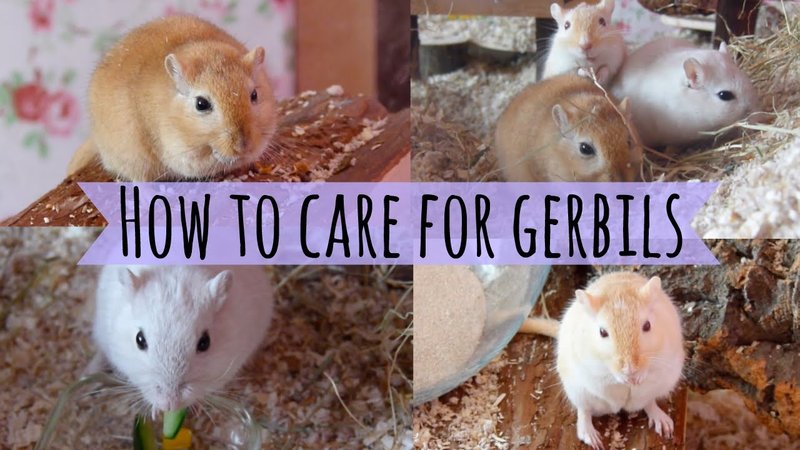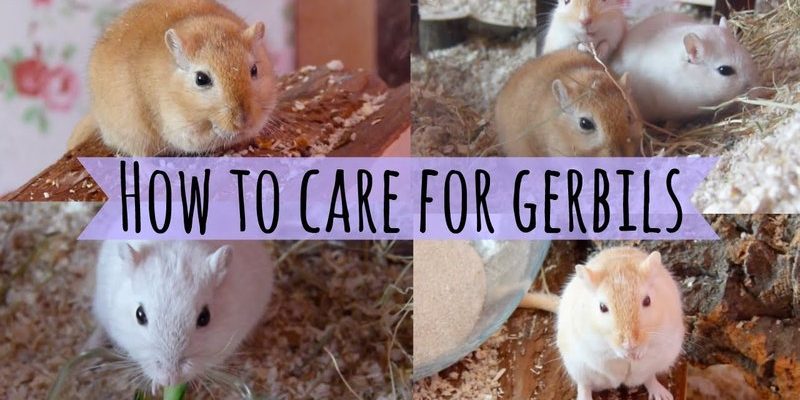
Caring for a lilac gerbil is a delightful journey, much like nurturing a young plant. You’ll need to provide the right conditions for growth and happiness. From their diet to their habitat and everything in between, each aspect is vital for a healthy, thriving gerbil. Let’s dig into the essentials that will make your little friend feel right at home.
Understanding Lilac Gerbils
Lilac gerbils are a color variant of the Mongolian gerbil, which are popular pets due to their friendly nature and manageable size. Weighing only about 2-4 ounces and growing to about 6-8 inches long, they are small enough to fit in your palm—but their personalities are larger than life!
These gerbils are social creatures that enjoy interacting with their owners and other gerbils. In the wild, they live in colonies, so if you can provide them with a companion, they’ll likely be happier. Just remember that introducing new gerbils requires some careful steps. Keeping their social needs in mind is essential for their overall well-being.
Diet: What Should You Feed Your Lilac Gerbil?
Feeding your lilac gerbil the right diet is crucial for their health. Generally, a good diet consists of a high-quality commercial gerbil food, which should be formulated specifically for their nutritional needs. Look for options that are high in protein and fiber while low in fat.
Here’s a simple breakdown of what to include in their diet:
- Pelleted Diets: These are specially formulated to provide the complete nutrition your gerbil needs. Aim for a product that includes seeds, grains, and fortified vitamins.
- Fresh Vegetables: Offer small amounts of fresh veggies like carrots, bell peppers, or leafy greens. Always wash them well and introduce new foods gradually.
- Occasional Treats: Fruits like apples or berries can be a fun treat, but keep it rare. Sugar can lead to health issues if they munch on it too often.
You might be wondering how much food to actually give your lilac gerbil. A general rule is about one tablespoon of pellets per gerbil daily, supplemented with small veggie amounts. Make sure to provide fresh water at all times, as hydration is key!
Setting Up the Perfect Habitat
Creating a cozy, safe space for your lilac gerbil is essential. Their habitat should mimic their natural environment as closely as possible while being safe for your pet. A large, well-ventilated cage is ideal—a minimum of 24 inches long is a good size for a pair of gerbils.
Here are some important components of their habitat:
- Bedding: Use a safe bedding material like aspen shavings or paper-based products. Avoid cedar and pine shavings, as they can be harmful.
- Hiding Places: Gerbils love to burrow and hide. Provide tunnels and hiding spots using cardboard tubes or store-bought hides to make them feel secure.
- Exercise Wheel: A sturdy wheel allows your gerbil to burn off some energy. Make sure it’s the right size—too small can hurt their back.
Keep their cage clean by spot-cleaning daily and doing a full clean every couple of weeks. This not only keeps them healthy but also prevents odors.
Enrichment: Keeping Their Minds Active
Here’s the thing: gerbils are naturally curious and need mental stimulation. Boredom can lead to behavioral issues, so providing enrichment is essential. You can make playtime fun and engaging in several ways:
- Toys: Invest in chew toys made from safe wood or natural materials. These can keep their teeth healthy while providing entertainment.
- Foraging Opportunities: Hide small amounts of their favorite treats around their cage or in tunnels to encourage natural foraging behavior.
- Time Outside: Consider creating a safe play area outside their cage. Always supervise them to prevent escapes and dangers.
Engaging your lilac gerbil in playtime enhances your bond and helps them express their natural behaviors. Just like children, they thrive on variety and fun!
Social Interaction and Handling
Social interaction is crucial for your lilac gerbil. If they’re alone, they might become lonely or stressed. Consider adopting a pair, but be careful with introductions. If you have one gerbil, spend time with it daily to keep it happy and engaged.
When it comes to handling, start slow. Offer your hand for them to sniff before scooping them up. Gently scoop from below, supporting their body. Avoid sudden movements; they might get startled! Regular handling helps them get used to you and can make them more social over time.
Remember, patience is key. Over time, your lilac gerbil will likely bond with you, showing affection and personality.
Common Health Issues and Signs to Watch For
Even though lilac gerbils are generally hardy creatures, they can face health issues like any pet. Common problems include dental issues, respiratory infections, and skin diseases. Being vigilant can help catch any troubles early on.
Keep an eye out for these signs:
- Changes in Appetite: If your gerbil suddenly stops eating or drinking, that could be a red flag.
- Behavior Changes: If your lilac gerbil becomes unusually lethargic or aggressive, it might indicate stress or illness.
- Abnormal Breathing: Heavy or labored breathing can suggest respiratory problems. Consult a vet if you notice this.
Regular check-ups with a vet who understands small animals can help keep your lilac gerbil healthy. Catching issues early means you can address them sooner.
Concluding Thoughts on Caring for Your Lilac Gerbil
Caring for a lilac gerbil can be a fulfilling experience that brings joy to both you and your furry friend. By focusing on a balanced diet, a proper habitat, and plenty of enrichment, you can help your lilac gerbil live a happy, healthy life. Remember, these little creatures thrive on interaction, love, and care.
So, whether you’re a first-time pet owner or an experienced enthusiast, embracing the journey of caring for a lilac gerbil can be incredibly rewarding. Just think of them as little companions who, with the right attention and love, will bring vibrancy and warmth to your home!

